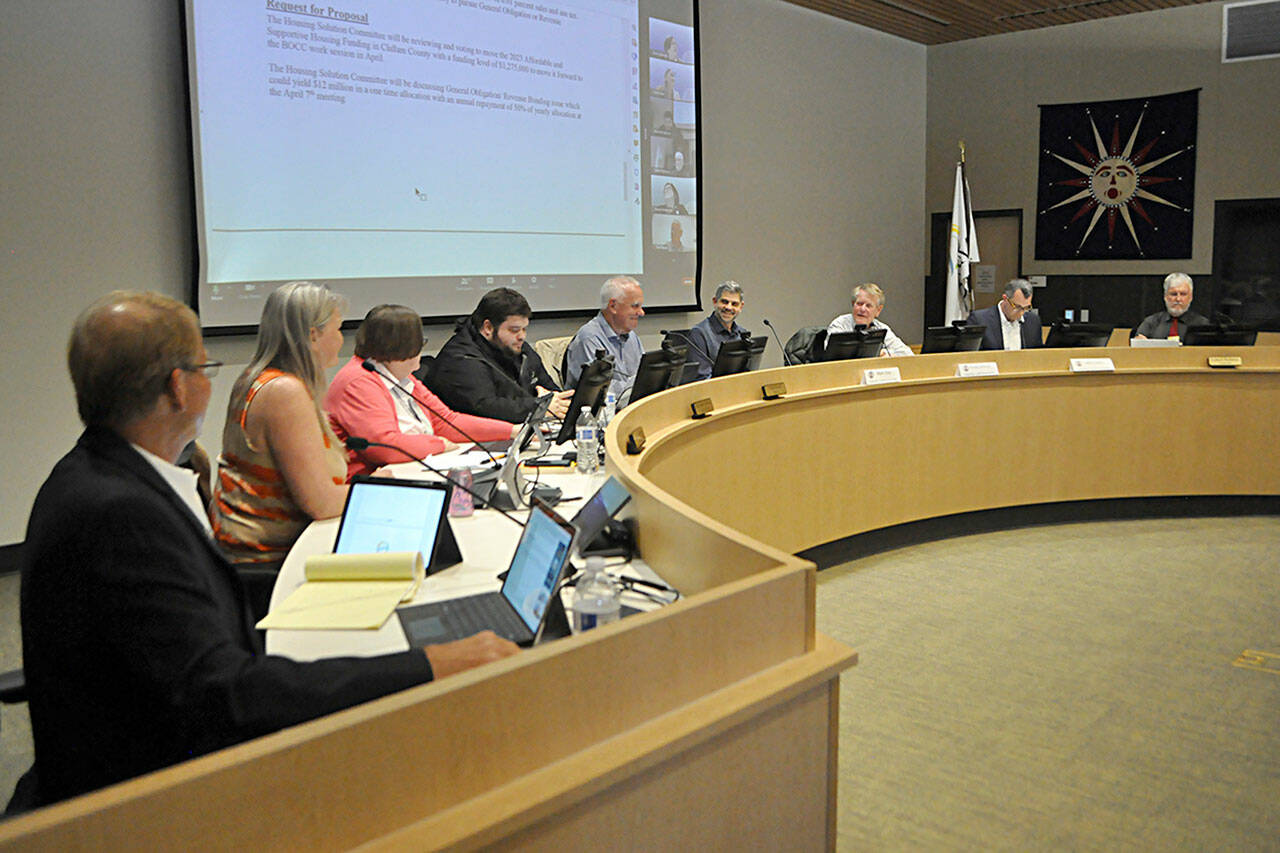Economic development, health and human services, and housing were the main issues Sequim city councilors and Clallam County commissioners touched on in a joint work session on March 27.
The one-hour meeting was their first dating back to before the pandemic.
“If we don’t think regional, we’re gonna miss a boat,” Sequim mayor Tom Ferrell said.
Housing was the main topic for councilors and commissioners with councilor William Armacost asking about “the elephant in the room”: why the county hasn’t created more workforce housing.
“There’s a shortage of housing whether in Forks, Sequim … or the county, it doesn’t matter,” Randy Johnson said earlier in the meeting. “We’re short housing everywhere.”
Asked about use of SHB 1406 and HB 1590 tax dollars, county commissioner Mark Ozias said the Housing Solutions Committee of elected officials, agency leaders and community members “wanted to take time to be careful and thoughtful” with projects and efforts, so that “we are able to address all kinds of housing with a variety of different strategies.”
Timothy Dalton, Clallam’s housing and grant resource director, said the county has a deficit of 6,000 homes and since 2010 there have been 2,000 homes built, with few of those being workforce homes.
“It’s a chicken-and-egg situation; you need houses for jobs and jobs for houses,” Dalton said.
He said in order for housing projects to be successful, they need multiple funding sources.
Commissioner Mike French said the county’s cheapest units have been under-built — a difficult thing to adjust.
“The market doesn’t want to build those cheap housing units … if we want (health and human services system) to work, they need other places for people to be discharged into,” he said.
French later added that he wants housing options “for all our neighbors” and that everyone benefits when all income levels have access to homes.
Ferrell said he feels the city council is ready to use its SHB 1406 revenues (about $79,000) to support people, either in Sequim or regionally.
Johnson said HB 1590 — a one-tenth of 1 percent sales tax for affordable housing — generates about $1.2 million a year in the county, which could fund a smaller development. Or,officials could put it toward a bond to build a larger project.
“We want to get the most homes possible with the funds we have available,” he said.
Ozias said as they develop an RFP process for funding requests, he encouraged city councilors on county advisory committees to make the city’s needs known.
French also encouraged the city to reach out to Clallam County Fire District 3 to see if it’d be possible to replicate Port Angeles Fire Department’s Community Paramedic Program, which he found to be one of the most impactful partnerships when he served on the Port Angeles City Council.
“I’m sure they deal a lot with behavioral health, and they might have thoughts and ideas,” he said.
Ozias also commended the city for helping start and supporting the Sequim Health and Housing Collaborative.
Jennifer Oppelt, deputy director of Clallam’s Department of Health and Human Services, said one way city councilors can help focus funds to Sequim is by sitting on county advisory boards for community service funding, which some councilors already do.
French said when affordable housing is ready to be built, it should be in cities and they need to look at zoning and clearing red tape to make nonprofits’ “job is easiest and cheapest as possible.”
“We would love to be an asset and a help in any way we can,” he said. “How do we set the rules up so this can happen?”
With the county’s comprehensive plan up for review in the coming years, French said they want to hear input.
Councilor Vicki Lowe said housing and growth management policies didn’t allow for the right kind of housing mix.
“For every development we have, we need to have the right amount of workforce housing,” she said.
Lowe added that for homeless people, she wants to have services in Sequim so they can stay here rather than live in Port Angeles so they can be contributing members of the community.
Initiatives
County commissioners and staff also briefly touched on some initiatives, including a five-year plan for Clallam’s economic development from Clallam EDC, the Innovation Cluster Accelerator Program (ICAP) for using local natural resources more for innovative industry, and the RECOMPETE Act that tentatively would provide funding to help areas retain workforces.
“I was excited when I heard about [RECOMPETE, but] I don’t know if we’re going to get it,” Johnson said.
“It’s an opportunity to change the landscape of the jobs here,” he said.
Johnson prefaced that by saying it’ll take multiple agencies and businesses working together to make it work.
“We know people are commuting here to manufacture boats, coming from Silverdale, and that doesn’t make a lot of sense,” he said.
In follow-up emails, Ozias said his main takeaway is that it’s important “we work closely together and be intentional about communicating with each other on a variety of key topics: housing, behavioral health, homelessness, economic development, energy resilience … the list goes on.”
City manager Matt Huish echoed the sentiment via email saying they “need to continue with additional follow-up meetings and ongoing conversations.”
He added that it was nice that the city was represented on county advisory boards and commissions.



